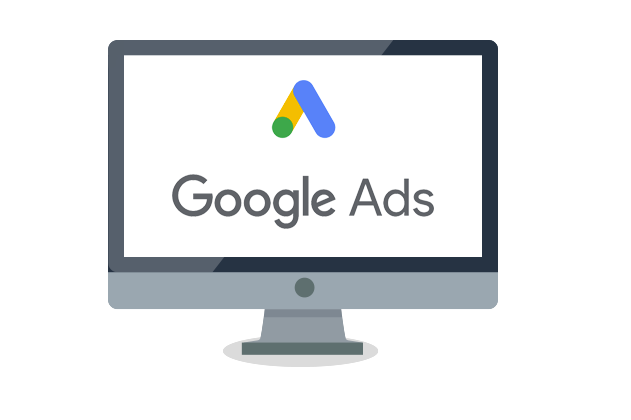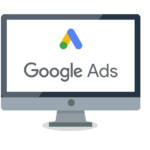Introduction
Google Pay Per Click (PPC) advertising is one of the most effective ways to drive traffic to your website and generate leads. By paying for clicks on ads that appear on Google’s search engine results pages (SERPs), businesses can ensure they reach their target audience instantly. This guide will walk you through the essentials of Google Pay Per Click, its benefits, and best practices to maximize your ad spend and improve your PPC campaign results Google pay per click advertising strategy.
What is Google Pay Per Click (PPC)?
Google PPC is an advertising model where advertisers pay a fee each time their ad is clicked. It’s essentially buying visits to your site rather than earning them organically. Google PPC ads appear on the search engine results pages, often at the top or bottom of the page, and are marked with a small “Ad” label.
How Does Google Pay Per Click Work?
In Google PPC, advertisers create ads targeting specific keywords that are relevant to their products or services. When a user searches for one of those keywords, their ad may appear in the search results. Advertisers are charged only when a user clicks on the ad. This means businesses are only paying for actual traffic.
Types of Google Ads for PPC Campaigns
Search Ads: Appear on Google’s search engine results pages when users search for keywords related to your business.
Display Ads: Show up across Google’s Display Network, which includes millions of websites, apps, and videos.
Shopping Ads: Display product images, prices, and merchant information directly in search results.
Video Ads: Appear on YouTube and other video platforms within the Google network.
Benefits of Using Google Pay Per Click Advertising
Google PPC is not only one of the most effective digital marketing strategies but also offers several key advantages.
1- Immediate Results
Unlike organic SEO efforts, which take time to show results, Google PPC campaigns can generate immediate traffic to your site once your ads go live.
2- Budget Control
With Google PPC, advertisers can set daily or monthly budgets to control their spending. This allows for flexibility in scaling your campaigns according to your marketing budget.
3- Targeted Audience Reach
Google PPC allows you to target users based on factors such as location, language, device, and more. This helps you ensure your ads are reaching the most relevant audience for your business.
4- Measurable ROI
Google’s robust reporting tools allow you to track key metrics like cost per click (CPC), click-through rate (CTR), conversion rate, and more. This data helps you optimize campaigns for better results and a higher return on investment (ROI).

How to Set Up a Google Pay Per Click Campaign
Setting up a successful Google PPC campaign requires strategic planning and optimization. Here’s how you can start:
Step 1: Define Your Goals
Before setting up your Google PPC campaign, decide what you want to achieve. Common goals include increasing website traffic, boosting sales, generating leads, or enhancing brand awareness.
Step 2: Choose Your Keywords
Keywords are the foundation of your Google PPC campaign. Use tools like Google Keyword Planner to find high-performing keywords related to your business. Choose keywords with a balance of high search volume and moderate competition.
Step 3: Write Compelling Ad Copy
Create engaging and relevant ad copy that includes your targeted keywords. A strong call-to-action (CTA) is essential for encouraging users to click on your ad.
Step 4: Set a Budget
Decide how much you are willing to pay for each click. Google PPC works on a bidding system, so higher bids can increase the chances of your ad being displayed.
Step 5: Optimize Your Landing Pages
Your landing page should be optimized for conversions. Ensure it aligns with the ad content and provides a seamless user experience to increase the chances of conversion after the click.
Google Pay Per Click Pricing and Bidding Strategies
Understanding how Google charges for PPC and how to optimize your bidding strategy is crucial to maximizing your return on investment (ROI).
Cost Per Click (CPC)
The cost per click is the amount you pay whenever a user clicks on your ad. This amount varies based on factors like keyword competitiveness, ad quality, and your bid.
Bidding Strategies in Google PPC
- Manual CPC: You set your bids manually for each keyword.
- Enhanced CPC (ECPC): Google automatically adjusts your bid in real-time to maximize conversions.
- Target CPA: Google adjusts your bids to achieve a target cost per acquisition.
- Target ROAS: Google optimizes your bids to achieve a target return on ad spend.
Common Mistakes to Avoid in Google Pay Per Click Campaigns
While Google PPC offers great potential, it’s easy to make mistakes that can lead to wasted ad spend. Here are some common mistakes to avoid:
1- Not Using Negative Keywords
Negative keywords prevent your ads from showing up in irrelevant searches. For example, if you sell high-end laptops, you might want to exclude terms like “cheap laptops.”
2- Ignoring Ad Extensions
Ad extensions, such as sitelinks, callouts, and call extensions, provide additional information and increase the chances of getting more clicks.
3- Failing to Test Ads
Always test different versions of your ads to find which one performs best. A/B testing can help you optimize your ads for higher CTR and conversions.
Google Pay Per Click vs. Other Advertising Models
Understanding how Google PPC compares to other forms of advertising can help you decide whether it’s the best choice for your business.
1- Google PPC vs. Organic Search (SEO)
While SEO involves optimizing your website to rank in organic search results, PPC offers immediate visibility in search results through paid ads. Combining both strategies can yield the best results.
2- Google PPC vs. Social Media Advertising
Unlike social media ads, which target users based on interests and demographics, Google PPC targets users actively searching for specific products or services, which can lead to higher conversion rates.
Conclusion: Maximizing Your Success with Google Pay Per Click
Google Pay Per Click (PPC) advertising is a powerful advertising tool that can drive instant traffic, enhance brand visibility, and provide measurable results. By following best practices and optimizing your campaigns, you can ensure that your Google PPC ads generate the highest return on investment (ROI) and help your business grow online.







